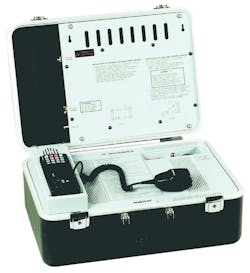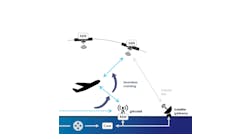MAXWELL AIR FORCE BASE, Ala. -- Civil Air Patrol is providing communications support to Air Force National Guard and Reserve units when they are engaged in fighting forest fires in the western U.S.
The Modular Airborne Fire Fighting System, or MAFFS, Program provides emergency capability to supplement existing commercial tanker support on wildland fires. When all other air tankers are activated but further assistance is needed, the U.S. Forest Service can request help from the Air Force's MAFFS units. MAFFS Guard and Reserve C-130s drop water and special slurry on forest fires across the western states. Their activity is controlled by the Air Expeditionary Group in Boise, Idaho.
Recently CAP used HF radio communications to directly connect, for the first time, the Air Expeditionary Group with one of its C-130s flying near Phoenix, a distance of close to 700 miles.
“In the demanding work of flying against forest fires, safety is vital, and that means dependable communications,” said Malcolm Kyser, CAP’s chief of communications. “Not only did the Air Expeditionary Group use CAP’s HF system to communicate directly with MAFFS 9 in this test, but several CAP radio operators assisted and were standing by on the frequency to provide relay services, if needed.”
In addition to the C-130, the Air Expeditionary Group conducted radio checks with CAP stations in Arizona, Idaho and Washington. Additional CAP stations in Oregon, Colorado and Wyoming reported good readable signals and were prepared to relay message traffic.
“This is a great opportunity for CAP’s highly trained HF radio operators to provide critical communications support to deployed Air Force units on actual missions,” said John Desmarais, CAP director of operations. “First Air Force and even the Pentagon are well aware of these MAFFS fire fighting missions, and CAP is now able to provide a meaningful contribution to the safety and effectiveness of their sorties.”
The CAP Communications Program consists of radio stations manned by trained operators across the country, available on short notice to support the missions of CAP and of its partner agencies. In particular, CAP communications systems provide point-to-point, air-to-ground and ground mobile radios that allow mission completion even when the commercial communications infrastructure is unavailable or overstressed.
Civil Air Patrol, the official auxiliary of the U.S. Air Force, is a nonprofit organization with 61,000 members nationwide, operating a fleet of 550 aircraft. CAP, in its Air Force auxiliary role, performs 90 percent of continental U.S. inland search and rescue missions as tasked by the Air Force Rescue Coordination Center and is credited by the AFRCC with saving an average of 80 lives annually. Its volunteers also perform homeland security, disaster relief and drug interdiction missions at the request of federal, state and local agencies. The members play a leading role in aerospace education and serve as mentors to more than 26,000 young people currently participating in the CAP cadet programs. CAP received the World Peace Prize in 2011 and has been performing missions for America for 71 years. CAP also participates in Wreaths Across America, an initiative to remember, honor and teach about the sacrifices of U.S. military veterans. Visit www.gocivilairpatrol.com or www.capvolunteernow.com for more information.



